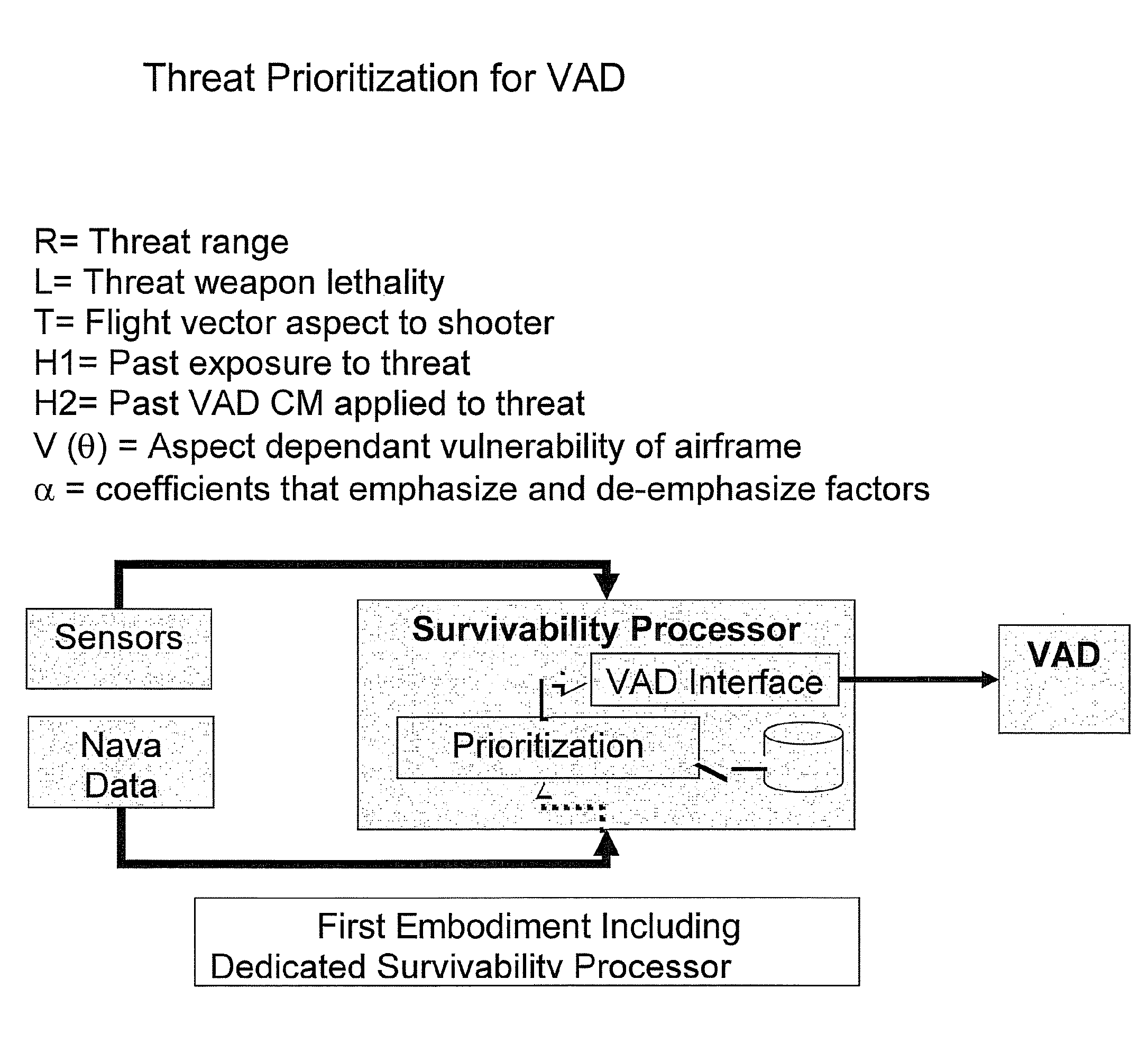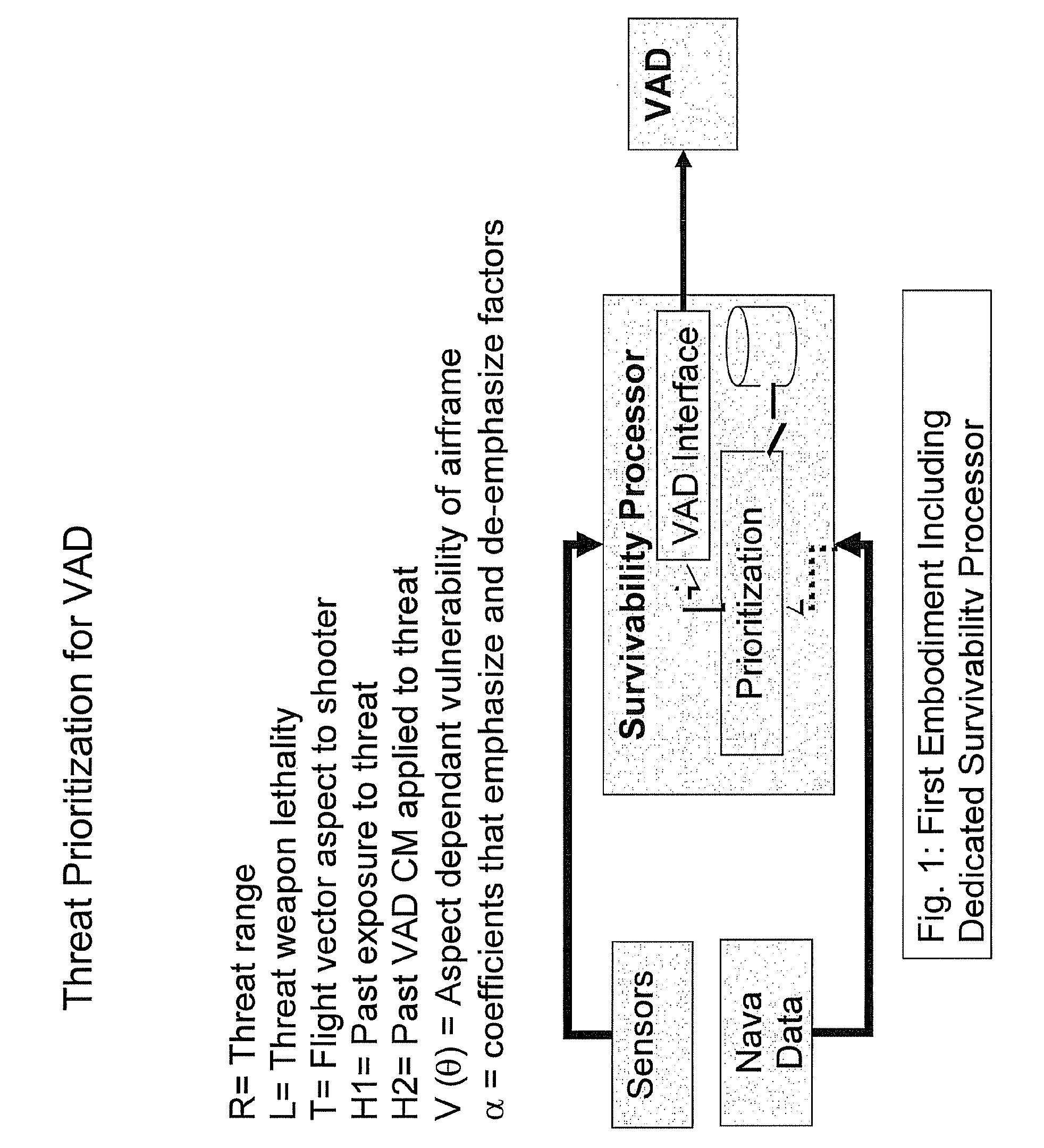System and method for prioritizing visually aimed threats for laser-based countermeasure engagement
a laser-based countermeasure and laser-based technology, applied in the direction of direction/deviation determining electromagnetic systems, instruments, analogue processes for specific applications, etc., can solve the problems of missile confusion and loss of helicopter, no aforementioned countermeasure system is effective against small projectiles, such as bullets, from visually trained small arms weapons, etc., to enhance the survivability of helicopter and aircrew, and increase the effectiveness of the vad countermeasure system
- Summary
- Abstract
- Description
- Claims
- Application Information
AI Technical Summary
Benefits of technology
Problems solved by technology
Method used
Image
Examples
first embodiment
[0021]In the present invention, shown in FIG. 1, the disclosed system includes an HFI system, a VAD system and a dedicated VAD engagement control processor, including VAD engagement control software running on the processor. The VAD engagement control processor provides the processing, prioritization and command and control functions of the present invention necessary for effectively using the VAD system to counter detected threats.
second embodiment
[0022]In the present invention, the disclosed system includes an HFI system and a VAD system with the VAD engagement control software of the present invention embedded and operating on a VAD system processor. The VAD engagement control functionality may also be incorporated on another existing helicopter processor, such as a flight systems or mission system processor, that includes and is executing other functionality, such as an operational flight systems or mission systems program, in parallel with the present invention. In these embodiments, the present invention uses equipment already installed on the aircraft to provide prioritization and control of the VAD system, and as such does not require any additional hardware that would increase the weight of the helicopter. Thus, the present invention enhances aircraft and aircrew survivability without any adverse affect on the range and endurance capabilities of the helicopter airframe.
[0023]The primary functions of the existing aircr...
PUM
 Login to View More
Login to View More Abstract
Description
Claims
Application Information
 Login to View More
Login to View More - R&D
- Intellectual Property
- Life Sciences
- Materials
- Tech Scout
- Unparalleled Data Quality
- Higher Quality Content
- 60% Fewer Hallucinations
Browse by: Latest US Patents, China's latest patents, Technical Efficacy Thesaurus, Application Domain, Technology Topic, Popular Technical Reports.
© 2025 PatSnap. All rights reserved.Legal|Privacy policy|Modern Slavery Act Transparency Statement|Sitemap|About US| Contact US: help@patsnap.com



